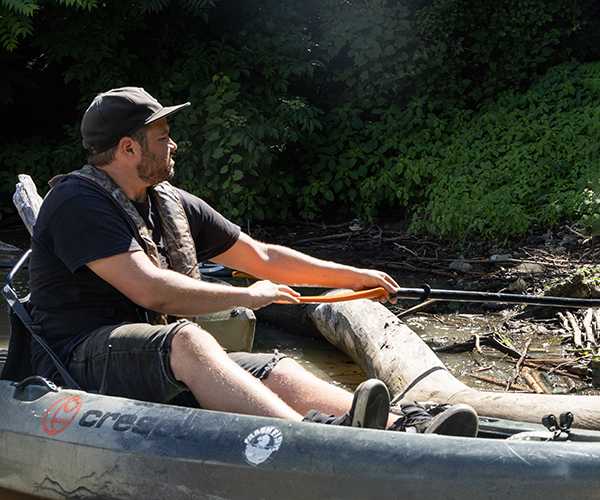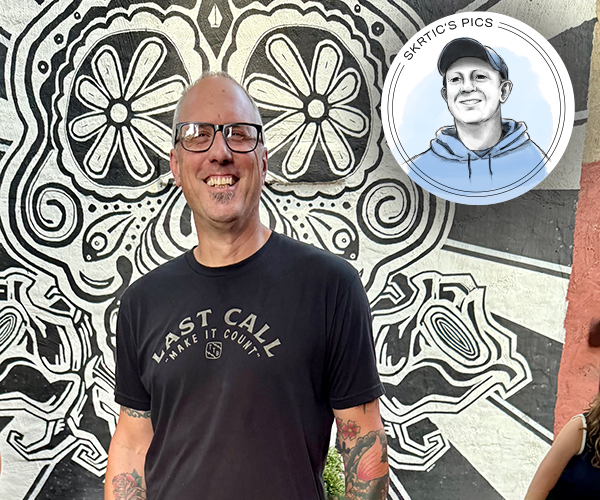It takes the eyes a few seconds to digest the structure — angled beams join together in a weave of hexagons that encourage collaboration rather than isolation. The workstation is clearly defined while easily reconfigurable; substantive but also, in some ways, invisible, like any good design that so neatly achieves what its creator set out for it to do.
The tired, staid cubicle we all know has competition. Here, in the senior wing of the Cleveland Institute of Art's industrial design department, students escape the plain casing of the past thanks to removable panels and built-in wheels that provide control over their workspaces. The mind wanders to what these could do for the modern office, for productivity. We would no longer be boxed in, no longer carbon copies of one another.
This new creation is known as the Hive, and its inventor, CIA industrial design chair Dan Cuffaro, sits in a classroom just down the hall among several full-size prototypes. He shows off the versatility of his design by arranging smaller models into numerous configurations as he muses on its potential to impact our society.
"It's solving our waste problem. It's solving our unemployment problem. It's solving our innovation problem," he says.
In 2009, CIA was renovating its Joseph McCullough Center for Visual Arts and constructing another building when the conversation turned to furniture. Around that time Cuffaro also received a call from the Cleveland Foundation, asking him to meet with A Piece of Cleveland co-founder Chris Kious to discuss how they could work together to create market demand for the reclaimed wood left behind in the wake of the city's foreclosure crisis and rampant home demolitions.
"Most of the projects using that material were very custom," Cuffaro says. A Piece of Cleveland was crafting kitchen cutting boards and reclaimed tabletops for restaurants, but not a product with a high enough retail value to justify use of such material.
With CIA's renovations on his mind, Cuffaro suggested workstations. After funding from the Cleveland Foundation and student input, the Hive was born. It was based partly on a workstation Cuffaro had designed and shelved eight years ago when he noticed the drafting tables students used allowed for no privacy or lockable storage. The rectangular workspace he previously sketched felt dull to him, so he scoured his house for aesthetically pleasing designs and found inspiration in hexagonal bathroom floor tiles.
"I just thought, I wonder how that would translate into the form of the structure," he recalls. "I did a few sketches of it and liked it. Immediately the whole idea of a hive of activity made sense."
Cuffaro turned his Hive idea into a company, Abeo Designs, and pledged to give 10 percent of the profits to CIA. The school placed an initial order of 32 units and plans to buy 98 more.
These days, Cuffaro is on sabbatical so he can answer the inquiries that appear in his inbox from company executives interested in learning more about the Hive. He speaks of his hope for a future where his local facilities are so busy that he is forced to open hubs throughout the country, reducing his product's carbon footprint and keeping the benefit local to the communities where they are sold.
But Cuffaro is also a realist. He knows it will take more than good feelings for corporate America to embrace his design. That decision must pay for itself in the form of increased productivity. That's why he still always has an eye on how he can improve an already striking design.
"We can't really rely on everybody to just do the right thing," he says. "It has to be compelling, it has to be a product that meets needs and solves a problem and it's well made. So our hope is that it solves that immediate practical need, and, by the way, it's good for you."



